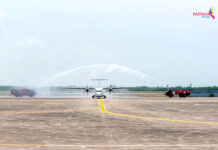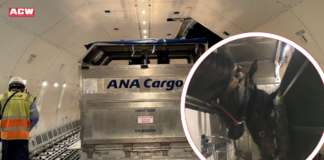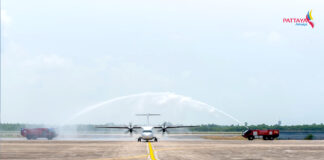

Wiremind is a founding member of CargoTech, an industry alliance that seeks to offer a digital solution for every air cargo business process. Through innovation and customer focus, its target is to be the easiest solution provider to work with and the preferred choice for airlines, GSAs, freight forwarders and GHAs.
Technology is a fundamental prerequisite for any effort in enhancing supply chain visibility and doing so in a scalable manner. In an industry like air cargo, this is particularly true because of the number of stakeholders involved in the core process of moving goods from point A to point B. Luckily, as an industry, it is making significant progress towards digitising offline touchpoints to at least have the initial digital visibility required.
The logical next steps will likely involve harmonising standards and communication protocols further to align the many stakeholders in the air freight supply chain, while also working towards addressing other “visibility gaps” such as piece level information and tracking.
With its mission in mind, Wiremind is seeing some very interesting technological developments across all facets of the airfreight industry, particularly as processes migrate online which will enable the extensive use of that data for analysis and to optimise different parts of the cargo lifecycle.
READ: A year full of accomplishments in air cargo for Wiremind
SkyPallet solution
SkyPallet is being used by multiple stakeholders in the airfreight sector, from airlines to forwarders and GSAs, which is testament to the utility and flexibility of the product. SkyPallet is a palletisation tool which means that its ‘objective’ is to find an optimised or improved solution of how to place and arrange cargo shipments in such a way that it minimises the space or volume occupied by the cargo and maximises remaining available space.
Importantly, there are many standard and user-defined constraints that SkyPallet factors in when producing a solution, such as aircraft and ULD dimensions or co-loadability restrictions. Clearly each stakeholder in the airfreight supply chain has a desire to ensure that available space is fully utilised for commercial and efficiency reasons, which SkyPallet allows its users to do in a matter of seconds.
“One thing we are particularly excited about in the ULD space is the growing use of physical dimensioning scanners in warehouses to accurately measure tendered cargo and how this can support the palletisation process. While many of our customers have been using the SkyPallet palletisation solution for some years now, they also see that improved accuracy on the dimensions is the next step that will lead to further increase in the added value it provides,” Nathanaël De Tarade, CEO of Wiremind Cargo, said.
This is particularly the case for more operational use cases of SkyPallet which occur once cargo is tendered at the warehouse. Wiremind sees a strong synergy between dimension scanning and SkyPallet, as its software can quickly retrieve these scanned dimensions via an API integration to rerun its calculation and determine a new optimal result.
This year, a significant part of our SkyPallet roadmap will be dedicated to improving its capabilities in supporting cargo operations. A key added-value of SkyPallet, which customers have shared with Wiremind is that it provides a “source of truth”. It supplies a basis for a discussion to help minimise disagreements in load plans or special cargo handling between commercial teams responsible for capacity control and the cargo operations teams responsible for the actual build up.
READ: Wiremind and Aeromexico Cargo initiate SKYPALLET implementation
Universally beneficial
The adoption of technological innovation, or lack thereof, is not confined to particular geographical areas. There are many different companies at the forefront of this digitalisation drive, spanning the whole globe. However, what can be said is that the adoption of technological innovation is not necessarily something that can happen overnight.
It requires a long-term concerted strategy and investment to ensure that the foundations in terms of data availability, technical architecture and organisational skill sets are readily implemented. It is in this area that we do see some differences in the preparedness of organisations, albeit not geographically confined.
Based on Wiremind’s experience, there are two challenges companies have often highlighted when looking to adopt technological solutions. The first is the availability of clean, well-structured data that can be effectively used and analysed to extract meaningful insights, or in our case, to be fed into powerful data science models to produce predictive recommendations. In the absence of such, there is a considerable data engineering effort required to understand and clean data to ensure it is fully usable. Second, is the importance of respecting the business processes which any technological solution becomes part of and placing a strong emphasis on change management.
Too often technological products are built in isolation from the underlying process and therefore there is a mismatch. This is something Wiremind desperately seeks to avoid by carefully working with customers to study and understand processes to ensure good product fit.
“We think it is very important for all airfreight stakeholders to embrace digitalisation and adopt technological innovation. While we understand that it is a substantial undertaking to get started, we have seen the multiple benefits of such innovations materialise and more airlines increasingly prioritise digital roadmaps,” de Tarade said.
“This is significant for two reasons – first, there is demonstrable value in adopting technological innovations which result in tangible benefits, benefits which airlines who have not started won’t be benefiting from. Secondly, an increasing separation will emerge between the airlines that have embarked on their digital transformation earlier and those that have not, particularly taking into account the lead time and necessary investments required to get started,” he continued
Wiremind has seen digitalisation accelerate over the last few years particularly within airlines looking to moderise their commercial processes and harness the data they currently have. A core part of its product offering is its use of data and adoption of inhouse-built data science models which can provide predictive forecasts and optimised recommendations.
“We are seeing many airlines seriously con-sidering using these products for their revenue optimisation needs. One such example is our Revenue Management module which analyses historical and live demand flows and rates to devise a demand forecast and associated optimal hurdle rates to sell capacity at,” de Tarade explained.










